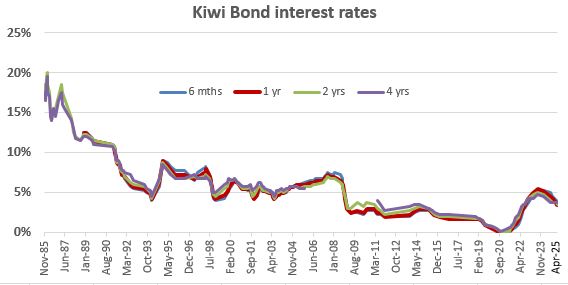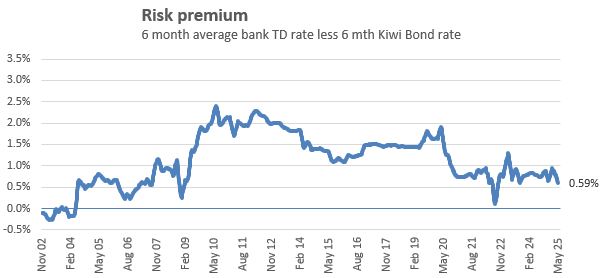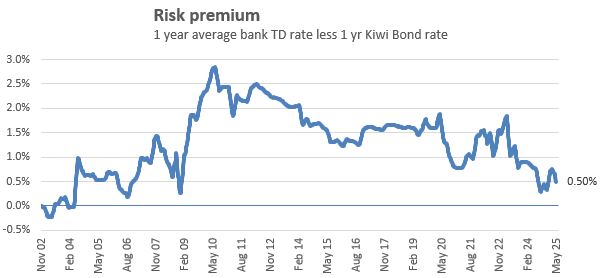
Kiwi Bonds set a practical 'risk-free' benchmark for term deposit savers to refer to.
The Depositor Compensation Scheme (DCS) is getting closer to launch on July 1, and that Government scheme will effectively guarantee all bank account deposits to $100,000 (including term deposits TDs).
As the covered institution will be paying a fee for the coverage, this is a cost that will likely be passed on to savers through lower offer rates.
The net effect could be to drive term deposit rates down to Kiwi Bond levels.
Kiwi Bond rates have varied a lot over the years. Since the GFC, they have been unusually low, although because they have been low for a long time (more than 12 years), these have become 'normalised'. During the pandemic they fell to virtually nothing.

Even the recent rises haven't yet raised these rates to pre-Global Financial Crisis (GFC) levels.
Pre-GFC, when enthusiasm for residential real estate investment seemed unconstrained (and term deposit saving was out of favour), risk premiums were low, even if term deposit rates were above 7%.
But the GFC shook savers' confidence in private financial institutions (remember the finance company carnage?), and those risk premiums rose sharply.



The above three charts track the average risk premium over bank rates.
But since the pandemic, they have fallen away, now to about only +½%, even as recent TD offer rates rose. (They jump around a bit due to the timing of the Kiwi Bond rate changes.)
The DCS could be another event that either lowers them further, or even has them vanish - because term deposits actually become risk-free to the $100,000 level.
Worth watching will be offer rates from non-bank financial institutions (NBFIs) that are also covered by the DCS. Those NBFIs are probably expecting to benefit from stronger inflows of deposit demand as savers spread their DCS coverage around to compound the $100,000 safety net. But if that does happen, those NBFIs will be challenged finding safe sustainable loan demand. Along with the DCS fees they will have to pay, this will limit what they can offer, effectively squashing the risk premium they have traditionally offered.
Better risk premiums (and higher return offers) will then come from NBFIs that are not covered by the DCS. Without considering risk, they will look good on the face of it at the advertised levels. Buyer beware.
Kiwi Bond interest rates were last changed on February 27, a fourth straight reduction. We have no idea when the next review will happen, or what that future change will be. But we would not be surprised if it is yet another cut.
2 Comments
Kiwibonds would be a lot more popular if we didn't have to buy them through Computershare.
With RealMe, there's no reason why they can't be sold directly to the public.
Agree. Computershare is a dreadful organization and service. How they can even be relevant in 2025 is beyond me. How can they be the official registrar, issuing agent, and administrator for Kiwi Bonds? Link Market Services is also a clown show in my opinion. The Japanese (MUFG) have taken over Link Market Services and I would suspect they could handle things better.

We welcome your comments below. If you are not already registered, please register to comment.
Remember we welcome robust, respectful and insightful debate. We don't welcome abusive or defamatory comments and will de-register those repeatedly making such comments. Our current comment policy is here.